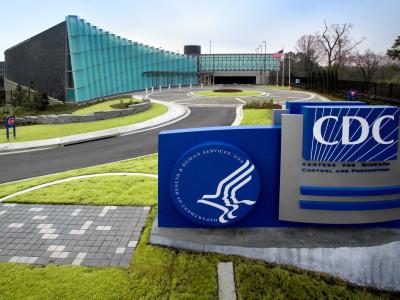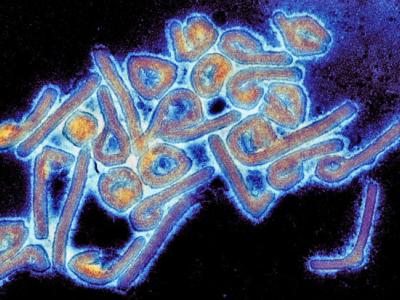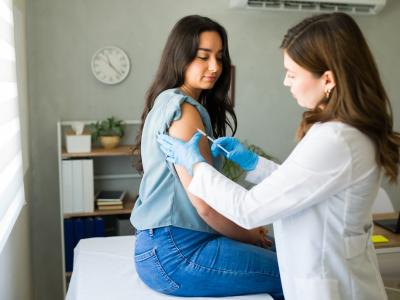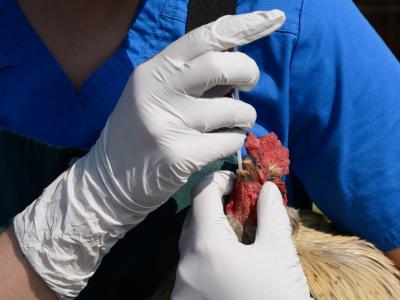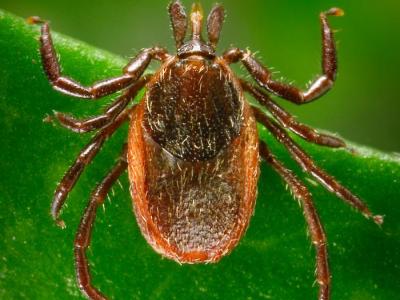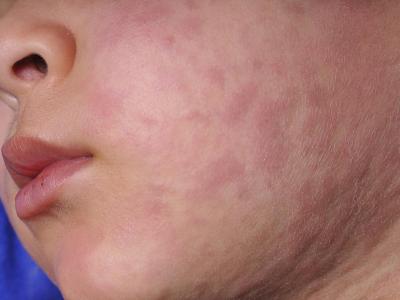First responders may have higher COVID-19 risk than healthcare workers
First responders' risk for COVID-19 infection is about 60% more than other essential workers, including healthcare workers (HCWs), according to a study published late last week in JAMA Health Forum.
In Arizona, 1,766 HCWs, first responders, and other essential workers took weekly COVID-19 tests from July 2020 to March 2021 (23,393 person-weeks). First responder infection incidence was 13.2 per 1,000 person-weeks, versus 6.7 in HCWs and 7.4 in other essential workers. Compared with HCWs, first responders' adjusted incidence rate ratio (IRR) was 1.60 (95% CI, 1.07 to 2.83), with similar results when compared with other essential workers.
Age was also an independent risk factor, according to the data, with every 10-year increase associated with a 19% reduction in risk (IRR, 0.81; 95% CI, 0.70 to 0.95). This was consistent with Arizona's COVID-19 case trends during the test period.
The cohort consisted of 22.4% first responders (eg, firefighters, correctional officers, emergency medical services personnel), 44.2% HCWs, and 33.4% other essential workers (eg, teachers, operators). The median age was 43.8 years.
While 61.9% were women, the researchers noted that fewer women were first responders (37.0%) compared with healthcare personnel (69.7%) or other essential workers (68.3%). Household income was also distributed unevenly, with 25.0% of HCWs reporting household income of $200,000 per year or more compared with 5.8% of first responders and 6.9% of other essential workers.
"This analysis of the AZ HEROES study data shows that we need to do more to help protect our first responders, their families and the communities they serve," said first author Kate Ellingson, PhD, in a University of Arizona press release. "Specifically, we need to better understand the risk factors driving infection among first responders and to tailor mitigation strategies accordingly, including vaccine promotion."
Oct 22 JAMA Health Forum study
Oct 22 University of Arizona press release
Non-COVID deaths lower in COVID vaccine recipients, study says
COVID-19 vaccine recipients had lower non-COVID death rates than those who were not vaccinated against COVID-19, according to a large study published in Morbidity & Mortality Weekly Report (MMWR) late last week.
The researchers used data from seven US health systems from Dec 14, 2020, to Jul 31, 2021, and matched 6.4 million COVID-vaccinated people with 4.6 million unvaccinated people. About 3.5 million people received the Pfizer/BioNTech vaccine, 2.6 million the Moderna vaccine, and 342,169 the Johnson & Johnson vaccine, and to account for healthcare-seeking behavior, vaccinated and unvaccinated participants were included only if they had at least one dose of flu vaccine in the past 2 years.
The study involved about 11 million people total.
The adjusted relative risk (aRR) of non-COVID deaths per year was 0.41% and 0.34% after the first and second dose of Pfizer, respectively; 0.34% and 0.31% after the first and second dose of Moderna, respectively; and 0.54% after the single dose of Johnson & Johnson. That compares with annual rates ranging from 1.11% to 1.47% in unvaccinated peers.
Among Pfizer recipients 12 to 17 years old, mortality risk did not differ between the vaccinated and unvaccinated cohort, which the researchers say could be due to more similar risk factors in this age-group compared with adults. The researchers also found that mortality rates among Johnson & Johnson vaccine recipients were higher than those who received an mRNA vaccine, which they say could be due to underlying health status and risk behavior differences.
"Despite numerous studies showing the safety of COVID-19 vaccines, some people have remained hesitant to get vaccinated," said lead author Stanley Xu, PhD, in a Kaiser Permanente press release. "This study provides reassurance that the vaccines are very safe, and, in fact, people who received COVID-19 vaccines in the United States had a lower death rate than those who didn't, even if you don't count COVID deaths."
Oct 22 MMWR study
Oct 22 Kaiser Permanente press release
Ebola sickens 1 more in DR Congo flare-up
One more Ebola virus case was confirmed in the Democratic Republic of the Congo (DRC) outbreak, raising the total to six, the World Health Organization (WHO) DRC office said in an Oct 23 Twitter post. The number of deaths remains at three.
Few details were available about the latest case, but the WHO said all are from the same Butsili health area within the Beni health zone of North Kivu province. The six cases include two fatalities of people who died in community settings, which raise the risk of disease spread.
In an update today, the WHO African Region said on Twitter that, of 544 contacts identified so far, 478 are being monitored.
The DRC is experiencing its 13th Ebola outbreak, which began earlier this month with the death of a young boy, whose fatal illness was confirmed, and the earlier suspicious deaths of three neighbors. Early sequencing testing suggests that the source of the current flare-up may be linked to the DRC's large outbreak of 2018-2020. Survivors have been known to harbor the virus in immune-protected parts of the body for a much longer time than the 6 months previously thought.
Oct 23 WHO DRC office tweet
Oct 25 WHO tweet
New CWD detection expands Pennsylvania management areas
The Pennsylvania Game Commission (PGC) recently announced new rules to curb the spread of chronic wasting disease (CWD) after tests on a roadkill deer in Jefferson County were positive.
Officials expanded the states disease management area (DMA) 3 and created a new one: DMA 6, which contains portions of Clearfield, Elk, and Jefferson counties.
The changes were triggered by the discovery of the dead buck near the northern boundary of DMA 3 and and within 2 miles of Pennsylvania's elk management area. The creation of DMA 6 will prevent high-risk animal parts from DMA 3 being moved into the elk management area.
The carcass was collected as part of ongoing CWD surveillance.
In a step to boost surveillance, the state also created another deer management assistance program (DMAP) unit, which will add more than 1,300 permits that allow hunters to take up to two more antlerless deer in the area. Along with the extra hunting opportunities, officials are asking hunters to submit harvested deer heads for CWD testing to determine the extent of infection.
CWD is a fatal prion disease in cervids like deer, elk, and moose that spreads among animals through contact with infected fluids or contaminated environments. Though infections have not yet been detected in humans, the Centers for Disease Control and Prevention (CDC) recommends that people avoid eating meat of CWD-positive deer.
Oct 22 PGC press release
New multistate Salmonella outbreak linked to salami sticks
The CDC announced over the weekend a new Salmonella outbreak linked to salami sticks sold at Trader Joe's grocery stores.
So far 20 people have been sickened in 8 states, including 3 who needed hospitalization. No deaths have been reported. Patients range in age from 2 to 75 years, with a median age of 11.
Eight of nine people interviewed by the CDC as part of the outbreak investigation said they ate Citterio brand Premium Italian-Style Salame Sticks, which are sold at Trader Joe's and other grocery stores.
"Investigators are still working to determine if additional products may be contaminated," the CDC said. "Do not eat Citterio brand Premium Italian-Style Salame Sticks with any best-by date. Throw them away."
California has reported the most cases with 8, Minnesota and Michigan each have 3, Illinois has 2 cases, and New York, New Jersey, Virginia, and Kansas each have a single case. According to the CDC, patients first developed symptoms from Sep 18 to and Oct 3.
Oct 23 CDC report
